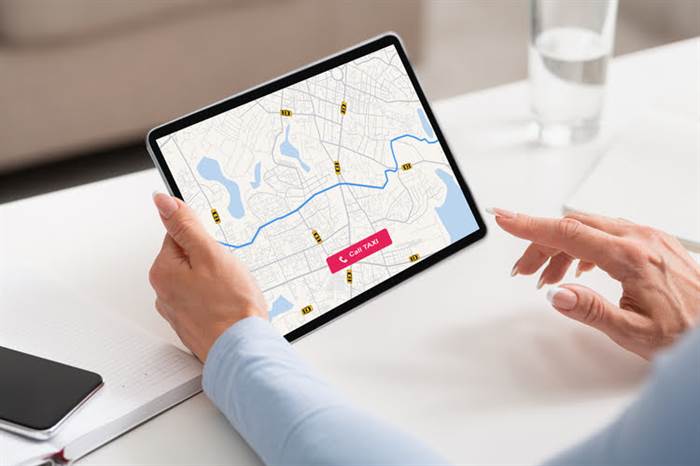What Is Rapid Application Development? 4 Phases of RAD Methodology
This third phase is important because the client still gets to give input throughout the process. They can suggest alterations, changes, or even new ideas that can solve problems as they arise. In contrast, RAD intents to deliver a product as quickly as possible, even if it means the product is not 100% optimized yet. Therefore, the code needs to be refined at the end, in order to improve the overall quality of the finished product.

Once a project has been scoped, teams begin building out the initial models and prototypes. The goal is to rapidly produce a working design that can be demonstrated to the client. Developers and designers work hand-in-hand with clients until a final product is ready, to ensure the client’s needs are being met. This step is often repeated as often as is necessary as the project evolves. During this early stage prototyping, it is common for developers to cut corners in order to produce a working product that is acceptable to the product owner.
RAD (Rapid Application Development) Model
Instead of following a rigid set of requirements, developers create prototypes with different features and functions as fast as they can. These prototypes are then shown to the clients who decide what they like and what they don’t. The goal of the prototyping phase during product development is to create a finished product to use as a sample for mass production. Prototyping usually involves experimenting with several versions of your product, slowly eliminating options and making improvements until you’re satisfied with a final sample. A product development plan (or product development strategy) is the methodology that a business will use to guide its product development.

Or, try SketchUp, Tinkercad, or Vectary to create 3D models on your own. However, more often than not, entrepreneurs will work with a third party to prototype their product. If you’re starting a clothing brand, work with local seamstresses, cobblers, or pattern makers. These services usually can be found online by Googling local services or reaching out to design or fashion schools for prototyping help.
Is your team RAD-ready?
The information compiled from doing product validation and market research will gauge the demand for your product and the level of competition before you start planning. By prioritizing regular check-ins with your team, you can improve communication, foster stronger relationships, and ultimately drive better business outcomes. If you’re looking to take your staff augmentation efforts to the next level, Trio can help! With our experienced team and comprehensive solutions, we can provide the support and expertise you need to achieve your goals. Set goals for the team member, both short-term and long-term, and identify actionable steps to achieve them. Discuss opportunities for growth and development within the team or organization.
In the planning stage, you’ll have designers, developers, and users come together to get a rough idea and understanding of what’s being created. Usually, the customer or client will also have an insight into each of these stages and play a more collaborative role. Features are estimated used t-shirt sizing (small, medium, large, extra large), and a rough three month plan is put together.
phases of the RAD framework
That said, you should think carefully about various software development approaches, talk with as many builders and makers as you can, and do what fits best with your team, your resources, and your personality. Feel free to reach out with any questions or thoughts, or just to give us some feedback on what you liked or didn’t like about this piece. Rapid application development (the RAD model) allows software engineers to make multiple iterations and updates to a software in a faster manner, without starting from scratch each time.

It involves concept development and testing, prototyping, costing, and commercializing the product by marketing it online. Rapid application development (RAD) is a methodology that focuses on developing applications rapidly through frequent iterations and continuous feedback. As the increasingly competitive software market emphasises a stronger demand for new applications, the IT industry is feeling pressure to deliver working products faster, and RAD is becoming a necessity. Another huge benefit with of this method is you can create a lot more prototypes, and thus test a lot more features. Product development is a numbers game – you want to get as many shots on goal as you can so you increase your chances of scoring the next great digital product. The use of prototypes gives the team the ability to provide feedback to a live system.
Gather User Feedback
At this point you’ve got a profitable and successful product ready for the world. The last step in this methodology is to introduce your product to the market. At this point, a product development team will hand the reins over to marketing for a product launch.
These teams get involved at the outset of the project and are responsible for writing test cases, checking compatibility across platforms, scale testing, visual QA. Software becomes adaptable with plenty of experimentation happening throughout the product life cycle. Rapid Application Development (RAD) is a style of agile development that aims to provide high-quality outcomes quickly. Join them by signing up for a free trial–no credit card required–or scheduling a customized product demo.
Keyword Simplicity
In contrast to Agile’s emphasis on production time, rapid application development promotes quick prototyping instead of more expensive planning. As a result, web applications and software developers may benefit from the Rapid Application Development model’s flexibility, adaptability, and time-saving features. The RAD method works well in situations when you need to create new apps within a short time frame. It does mean that there needs to be project management what is rapid development above the silo level, ensuring teams are working in the same direction, even as they work at different ends of a particular application. This is especially true during the requirements gathering process, where it’s critical to understand the implications up and down the software stack. Building software as objects or modules means maintaining a big-picture perspective even as your teams deal with granular technical and business requirements.
- The broad nature of the requirements helps you take the time to segment specific requirements at different points of the development cycle.
- When working on an app, the several stages of its life cycle can be influenced by this type of application development method.
- That means you’ll end up restarting the development from the beginning every time the client suggests changes.
- But when things become commonplace and you follow the lead of your competitors, it becomes difficult for your business to stand out.
- During product development, each journey to a finished product is different and every industry has its own unique set of quirks involved in creating something new.
- We offer flexibility in terms of project requirements and team size adjusting it according to the project’s needs.
- Components can be built and tested together sooner, leading to quicker mitigation of errors that wouldn’t show up until much later in a traditional waterfall SDLC.
Therefore, the product manager must carefully select highly skilled individuals to perform the activities involved in rapid application development. If you don’t have the right skills and competencies at your disposal, you might be better off with a more straightforward framework. The agile and incremental approach removes failures such as big-budget waterfall products.
Leveraging Product Strategy
Product development refers to the conceptualization and creation of a new product of the product life cycle. Product management is responsible for guiding all product teams toward creating a usable product customers will buy, as well as the product roadmap. Both the product management and product development departments work together to plan and build the product roadmap that will bring the product to market. The product development process refers to the step a business takes to bring a product to market. It can be a completely new product, renewing an old product, or introducing an existing product to a new market.